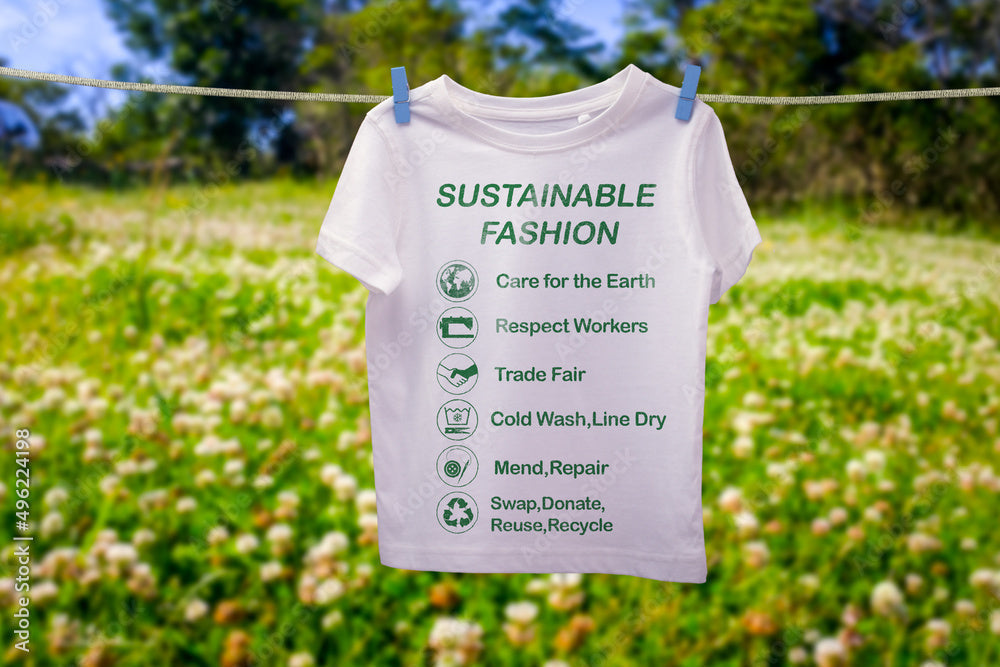Let’s be honest: fashion is evolving—and for the better.
This year, it’s not just about looking great; it’s about feeling good knowing your wardrobe choices are kinder to the planet. In 2025, we’re seeing a shift where ethics meet aesthetics. And at Karma Totes, this shift couldn’t align more with who we are.
Here’s a deep dive into the most significant sustainable fashion trends redefining how we dress and why they matter more than ever.
1. Regenerative Fabrics: Clothes That Care for the Earth
We’re moving beyond organic cotton into something even more powerful: regenerative textiles. These are crops, like hemp, that not only use fewer resources but also restore the soil they grow in. When you carry a hemp tote, you’re not just carrying groceries; you’re supporting healthier ecosystems.
Cutting-edge alternatives like mushroom leather (yes, fungi!) and algae-based fabrics are also gaining momentum. They’re compostable, innovative, and often help absorb atmospheric carbon during production. That’s fashion that gives back.
2. Circular Fashion: Giving Clothes a Second Life

Circular fashion is changing how we think about ownership. Instead of throwing things out, we’re learning how to extend their lives.
This trend is all about reusing, repairing, reselling, and recycling. From clothing rental services to swap meets and upcycling events, consumers are finding creative ways to give fashion a second (and third!) chance.
At the heart of this? A mindset shift. We’re treating fashion as something to cherish, not discard.
3. AI Joins the Fashion Crew
AI is becoming fashion’s secret weapon and not just for automation. It helps brands design smarter, produce more responsibly, and minimize waste.
How? By analyzing what customers want, AI helps brands avoid overproduction—no more endless inventory in warehouses. Instead, we’re seeing smaller, made-to-order batches that reflect real demand. It’s efficiency and empathy rolled into one.
4. Slow Fashion Makes a Strong Return
More people are stepping back from impulse shopping and embracing the joy of intentional purchases. Slow fashion is quality over quantity, investing in timeless pieces crafted to last.
Whether a beautifully stitched tote bag or a well-tailored outfit, these pieces are built with care, not speed. They carry stories, not just labels. It’s the kind of fashion that feels just as good a year from now as it does today.
5. Vegan Leather, But Make It Truly Green
Not all vegan leather is eco-friendly. Many early versions relied on plastic, hardly a win for the planet.
Now, innovators are making leather alternatives from pineapple leaves, cactus, corn husks, and apple peels. These bio-based options are renewable, biodegradable, and free of toxins. They look and feel like traditional leather without environmental burden or animal harm. And yes, they make for some incredibly stylish bags too.
6. Eco-Friendly Dyeing Techniques
Vibrant color no longer must come with a side of pollution.
New dyeing technologies will dramatically reduce the environmental impact of colored textiles by 2025. Techniques like waterless dyeing, natural pigment use, and even color created from bacteria or lasers are rising.
You can wear your favorite bold hues knowing they will not damage waterways or ecosystems.
7. Knowing Where It All Comes From
Today’s shoppers care more than how clothes look; they care about how they are made. Transparency is essential in 2025. Brands utilize blockchains and digital tools to trace a product's journey from raw materials to retail, no more hidden factories or guessing. Shoppers want and deserve to know the story behind every stitch.
8. Innovative Fashion: One Item, Many Uses

Why buy ten things when one can do the job? Multi-functional fashion is taking center stage. Consider a reversible top, a jacket that converts into a bag, or a scarf that can act as a belt or a shawl. These clever designs help reduce wardrobe clutter and enhance versatility. It's sustainable minimalism done right.
9. In 2025, social media isn’t just about flashy outfits
More and more influencers are advocating for a mindful style, from secondhand hauls to promoting ethical brands. Their platforms aren’t merely inspiration boards anymore, they’ve become spaces for real change.
They demonstrate that you can remain stylish while shopping sustainably. And their communities love it.
Why It Matters to Us
At the end of the day, sustainable fashion is about choice. Every piece we wear reflects our values. Are we choosing style at the planet’s expense, or do we dress with intention? So, the next time you pick something off the rack (or click 'add to cart'), pause and ask:
• What impact does this item have on the planet?
• Will I wear this long-term?
• Does this piece represent the kind of future I want to support?
Fashion in 2025 will be thoughtful, expressive, and inclusive. It’s not just what we wear; it’s how we show up for the planet. And that, truly, is what makes it timeless.












0 comments